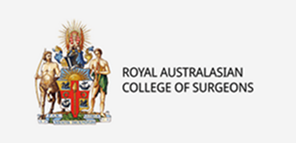- 0401 792 644

- 0401 792 644

A hernia occurs when tissue—often part of the intestine or abdominal fat—pushes through a weakened area in the abdominal wall. It can resemble a bulge that’s more visible when standing and may flatten when lying down.
Hernias most commonly occur in:
Hernia repair is one of the most frequently performed surgeries in Australia. It is estimated that up to 27% of men and 3% of women will develop an inguinal hernia in their lifetime.
Hernias may be present at birth or develop over time due to pressure on weakened abdominal muscles. Common contributing factors include:
Hernias may not cause symptoms initially and are often discovered during a routine exam or imaging. When symptoms do occur, they can include:
If left untreated, hernias can enlarge or lead to serious complications:
Surgery is the only definitive treatment for a hernia. Support garments like trusses may provide temporary relief but do not fix the underlying problem. Surgical options include:
Note: In certain cases, particularly for men with small, minimally symptomatic inguinal, umbilical and incisional hernias, a ‘watchful waiting approach’ may be appropriate. This means monitoring the hernia over time without immediate surgery, especially if there are no complications or discomfort. Your surgeon will discuss whether this option may be suitable for you.
Modern hernia repairs commonly use surgical mesh to reinforce the abdominal wall. The mesh is typically made of biocompatible material that integrates with your tissue and helps prevent recurrence. It covers a larger area without tension, which reduces the risk of the sutures pulling through.
While rare, some patients may experience long-term discomfort or pain after hernia repair. This is more likely after open inguinal repairs. If pain persists, it can usually be managed with physical and massage therapy, medications, nerve blocks, or in very rare cases, surgical revision.
Preoperative preparation may include:
Important medication guidance:
Other instructions:
Driving: Avoid driving for at least one week post-operatively or until you can comfortably perform an emergency stop.
Returning to work:
Exercise: Gentle walking is encouraged. Avoid core strengthening or high-impact exercises until cleared by your surgeon (typically after 4–6 weeks).
Hernia repair surgery has a high success rate, particularly with mesh reinforcement. The risk of recurrence is low. Following post-operative instructions, maintaining a healthy weight, and avoiding excessive strain can reduce your risk of recurrence.
While hernia surgery is generally safe, all operations carry some risks. Potential complications include:
Call Dr Noushi or the hospital if you experience:



